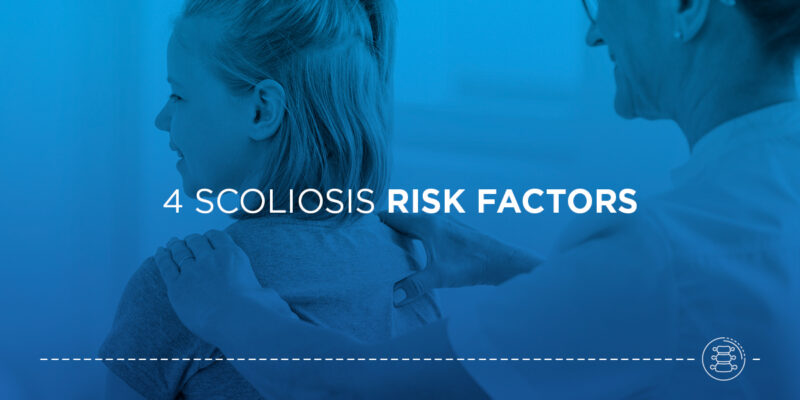

Scoliosis is a common spine condition that impacts millions of people in the United States. Thankfully, doctors can usually diagnose this condition early and help patients find treatment.
Since early intervention can prevent scoliosis from progressing and becoming more severe, it’s essential to know the most common scoliosis risk factors to ensure you or your child receives the appropriate screenings.
Scoliosis describes when the spine curves sideways. Patients with spine angle measurements between 25 and 40 degrees have moderate scoliosis, while a spine angle measurement over 40 degrees is a sign of severe scoliosis.
The effects of scoliosis vary depending on an individual’s specific condition. A patient with mild or moderate scoliosis may experience minor symptoms such as subtle changes to their posture, gait or how their clothes hang on their body. If a patient has severe scoliosis, they may experience more dramatic postural changes and related conditions. These issues can affect your lungs, balance and mobility. Scoliosis and its effects cause excessive stress and impact mental health for some patients.
This condition commonly affects adolescents, but children and adults can also develop curvature. Some cases are congenital, meaning some patients are born with scoliosis. People have the same risk of scoliosis regardless of sex, though girls and women often have more severe cases requiring treatment.
Every case of scoliosis is unique, but the most common causes of this condition include:
While factors such as age, sex and family history can place an individual at a higher risk for developing scoliosis, the cause of most cases is unknown. As a result, you or your child may develop scoliosis without experiencing a risk factor. These cases are considered idiopathic, meaning specialists have no definite cause to pinpoint. Though idiopathic scoliosis can develop at any age, it’s common during adolescents when rapid growth makes the spine’s curvature larger and more noticeable.
The best way to prevent common scoliosis risk factors or slow the condition’s progression is through early treatment. At New York Spine Institute, our scoliosis specialists provide personalized treatments to control scoliosis progression and correct your spine’s curvature. Take the first step toward improving your spine by scheduling an appointment with us today!